At 80, Union Station tries to reinvent itself for a rail future
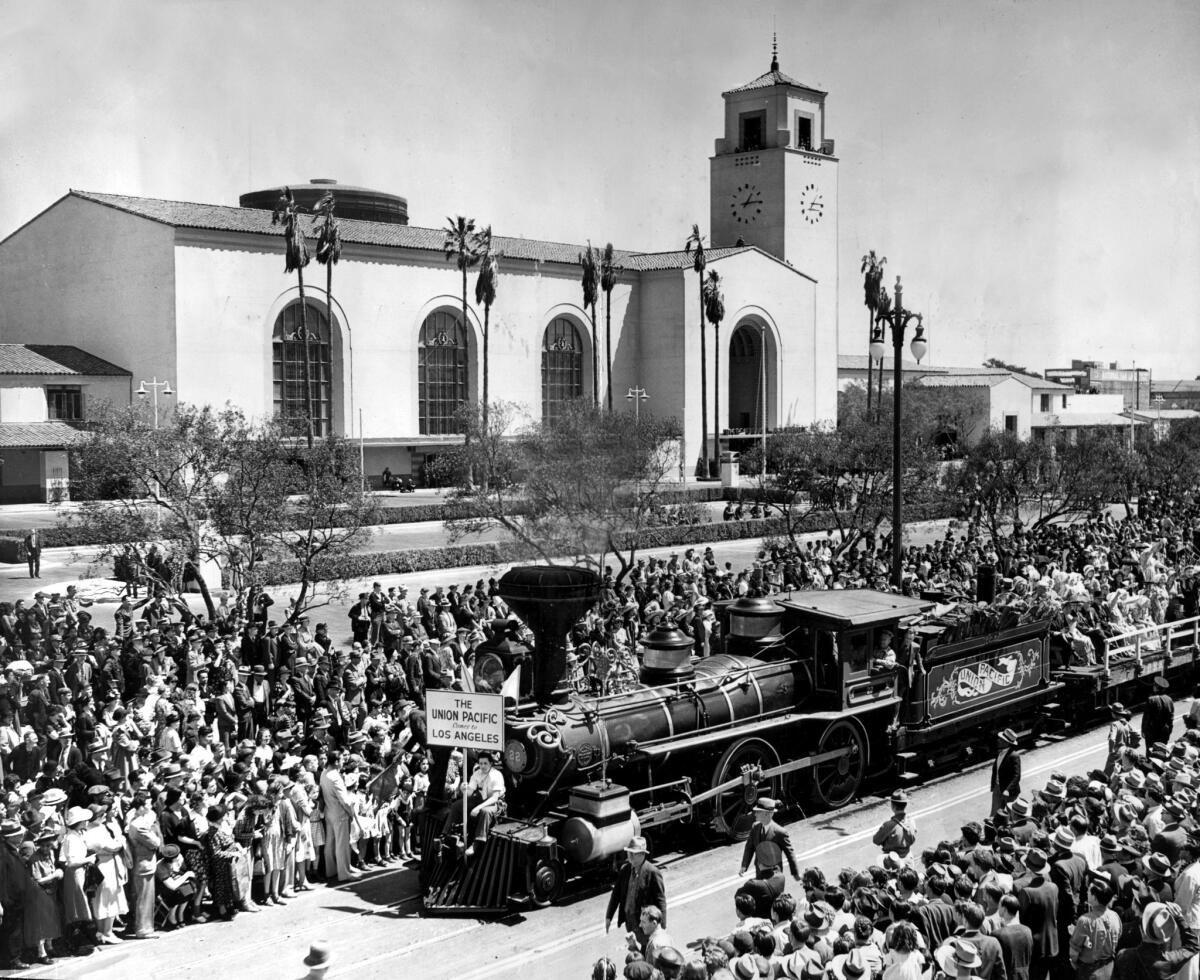
For two decades, Traxx was a top draw at Union Station — an Art Deco-themed restaurant with white linen tablecloths and a mahogany bar that reflected the history and architectural grandeur of its home.
But the restaurant closed this month after struggling to compete with myriad upscale bars and eateries in a resurgent downtown Los Angeles. “It’s a younger market now. They want to drink and hang out in a cool place,” former server Paul Kanemitsu said of the decline in customers. “We’re a little more mature.”
The closure of Traxx underscores the struggle Union Station is facing as it finds itself at a crossroads in its 80th year.
The transit hub bustles with 36 million visitors a year, slightly less than the traffic at Washington’s famed Union Station. But unlike in the nation’s capital — and in cities such as Denver and New York — L.A.’s Union Station has yet to become a central destination.
Officials are considering a variety of proposals, both modest and grand, to improve Union Station — with much riding on whether California’s troubled high-speed rail line actually makes it to downtown.
One effort currently underway is Link Union Station, a $2.2-billion project that hopes to make the facility a hub connecting Metro Rail’s intercity subway and light rail lines to allow for a better long-term travel experience — and hopefully stem falling ridership. The project is slated for completion before the Olympics come to Los Angeles in 2028.
In 2018, Metro passenger numbers hit their lowest point in more than a decade as travel options, including Lyft and Uber, have become more readily available. Air and automobile travel also continue to offer inexpensive alternatives to the traditional rail upon which Union Station was built.
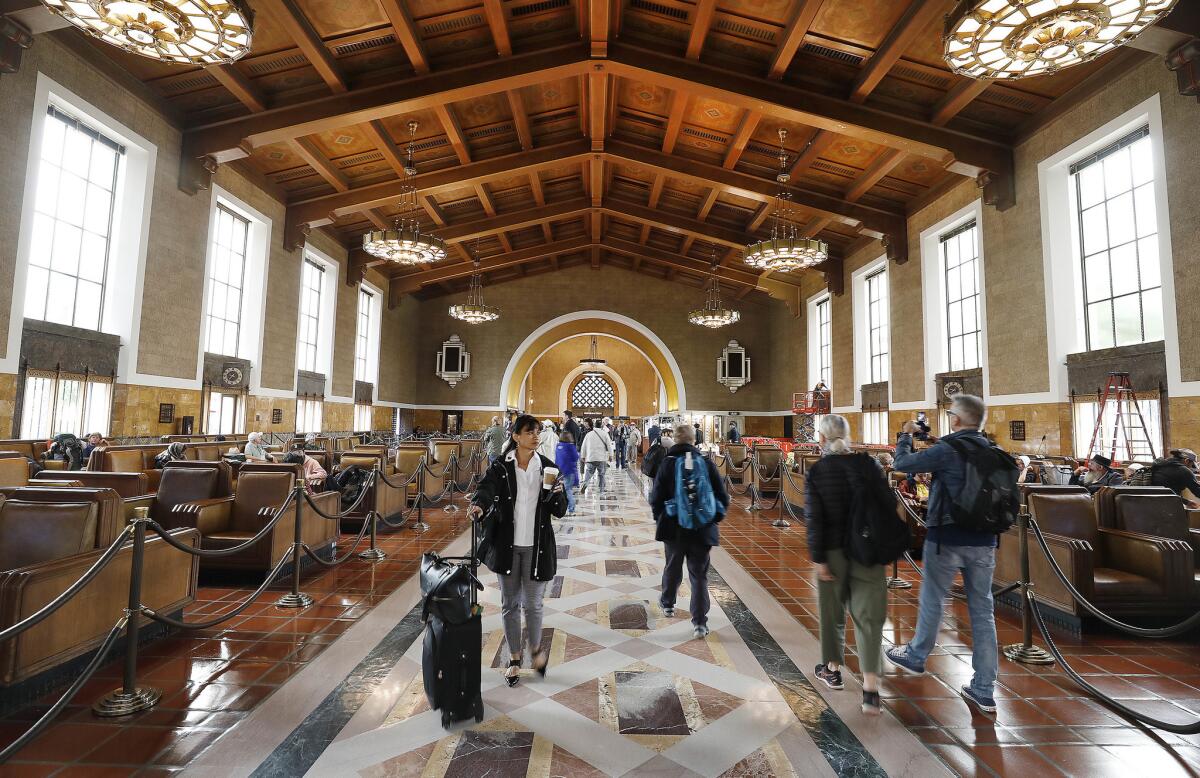
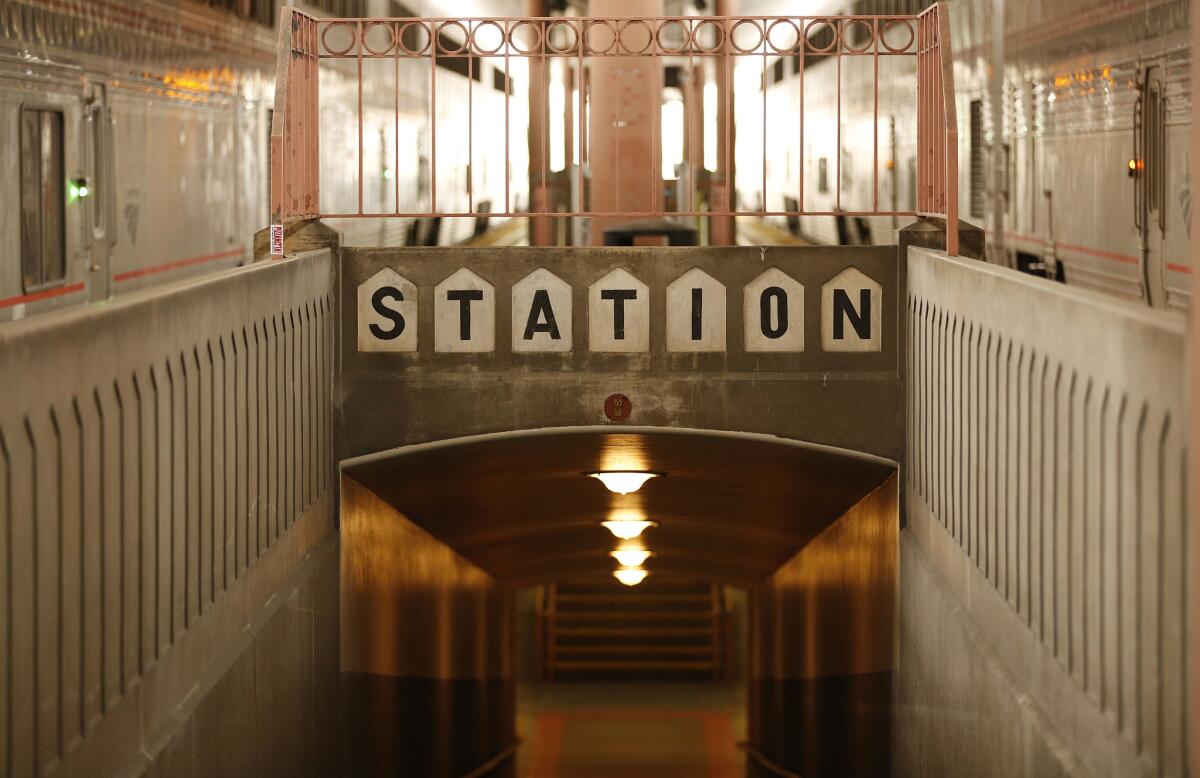
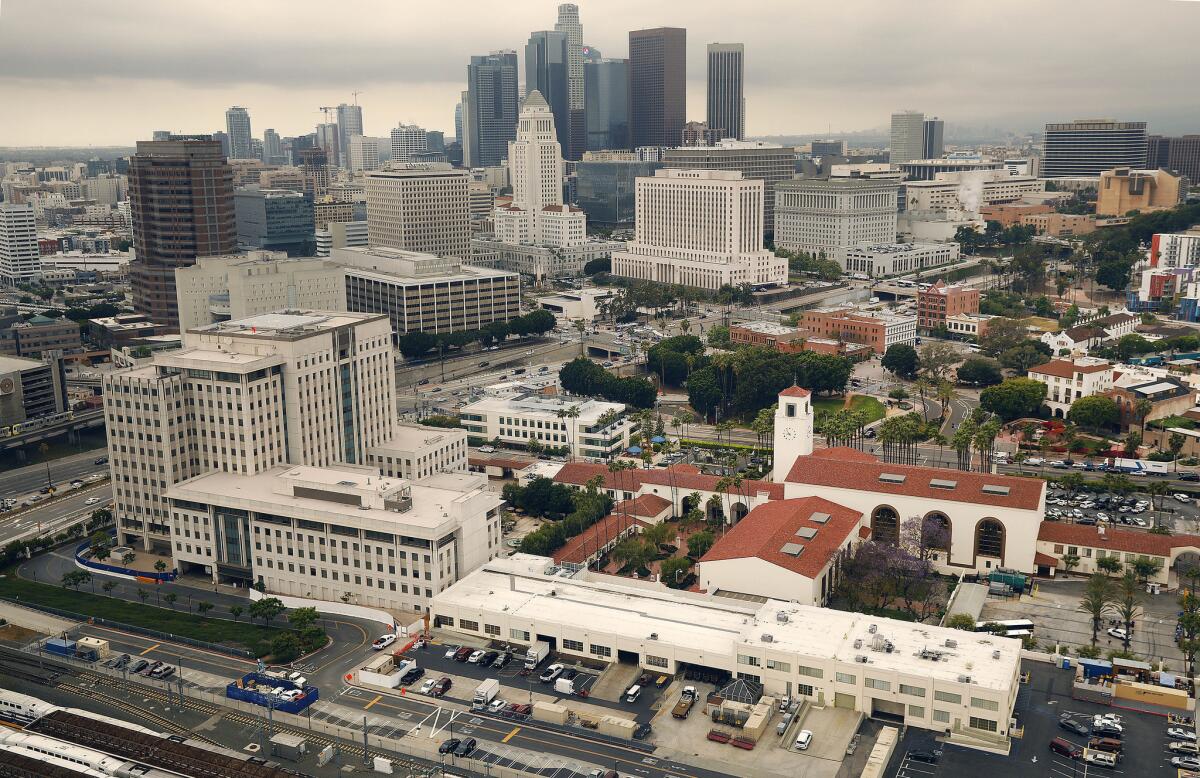

Still, officials are convinced rail is going to be a much bigger part of Southern California’s transit future.
“We’re in a rail renaissance right now,” said Jeanet Owens, Metro’s senior executive officer. “A couple years ago, Los Angeles didn’t know that we’ll be hosting the Super Bowl, [possibly] the World Cup, and we’ll be hosting the Olympics. So we have a trifecta of events occurring in Los Angeles. It really gives us an opportunity to get people where they need to go … transit options in lieu of driving a car.”
Metro anticipates nearly 200,000 rail trips per day by 2040. That’s double the current number.
While officials debate the big-ticket transformation of Union Station, they are considering smaller improvements aimed at making the landmark a community hub.
The transportation agency has spent more than $21 million since 2013 on efforts to beautify and restore the depot. Improvements have included the installation of heat and air conditioning, as well as the cleaning of 268 leather chairs in the waiting area. Still underway are updates to the walkways and lighting, a redesign of the landscape to resemble the original plantings and the implementation of a system to accommodate the visually impaired.
Ken Pratt, Metro’s director of Union Station property management, thinks those projects could be completed within the next three years.
“Not only to facilitate travelers and commuters, but to enhance Union Station as a destination,” Pratt said.

A street and sidewalk project is scheduled to start in 2021 to prioritize pedestrians and cyclists and better connect Union Station with its surroundings. The sidewalk on the west side would be expanded, and at the front of the transit hub — where those headed to Olvera Street and the El Pueblo cultural monument typically walk through a parking lot area — a consolidated sidewalk would be added to take people directly across Alameda Street.
“These are ways to reactivate the station for people to experience it as a transit place and a destination,” said Jenna Hornstock, a Metro executive officer.
Union Station was completed in 1939 at a cost of $11 million, after a nearly 20-year legal battle between the city and the railroads over who would pay for it and where it would stand.
By the time the facility opened, transcontinental air traffic had become accessible and the automobile had gained more prominence. Trains were no longer the great conduits for transportation.
By the 1960s, Union Station was all but a ghost town. It’s been said that at times, the empty space was often filled only with birds.
That changed in the 1980s with the development of Metrolink regional transportation and the addition of other services such as Greyhound.
“It started to come back to life as the city recognized that the streets and freeways were not servicing its population sufficiently,” said Marlyn Musicant, author of “Los Angeles Union Station.” “There was a renewed interest in public transportation.”

While the building — with its combination of Art Deco, Mission Revival and Streamline Moderne architecture — is a testament to Los Angeles’ history, little of Union Station’s past is apparent on the inside.
“When you walk through, there’s very little evidence of the brilliant community once there,” said Eugene Moy, a longtime member of the Chinese Historical Society. When Union Station was built, entire neighborhoods were wiped out, including L.A.’s original Chinatown.
“What many in our community who support historic preservation hope is for Metro to incorporate educational materials in the station itself that will help teach about the diversity of Los Angeles,” Moy said.
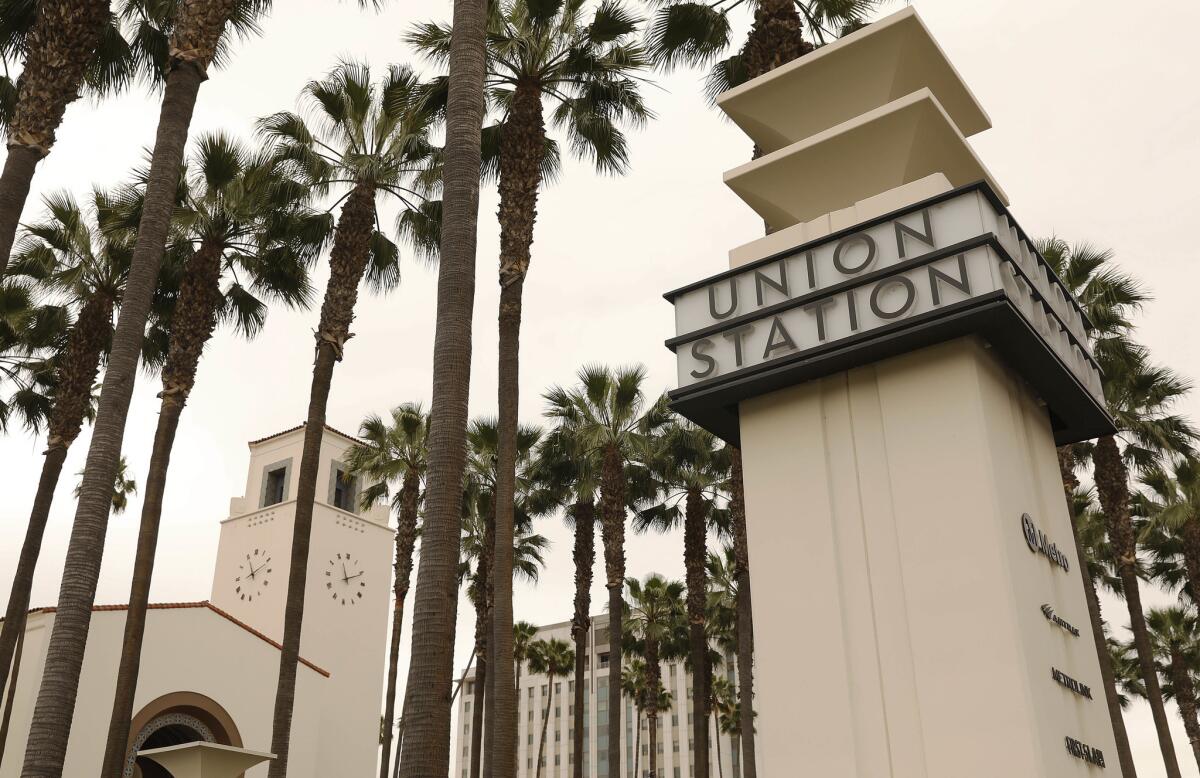
At a recent 80th anniversary celebration for Union Station, vendors sold soaps and crafts from Los Angeles artists, and a miniature version of the train station dazzled children. Music filled the courtyard. A Cinco de Mayo festival took place across the street. A mariachi band played and Olvera Street bustled.
Mildred Ochoa and her husband brought their 2-year-old son. The family moved to Los Angeles two years ago from Chicago and didn’t know anything about the landmark building before their arrival. Now, it’s an integral part of Ochoa’s week as she commutes daily into downtown on the Gold Line.
As her son slept in his stroller, with a toy train in his hand, she said she’s sure that Union Station will remain a part of her future — and L.A.’s
Start your day right
Sign up for Essential California for news, features and recommendations from the L.A. Times and beyond in your inbox six days a week.
You may occasionally receive promotional content from the Los Angeles Times.



